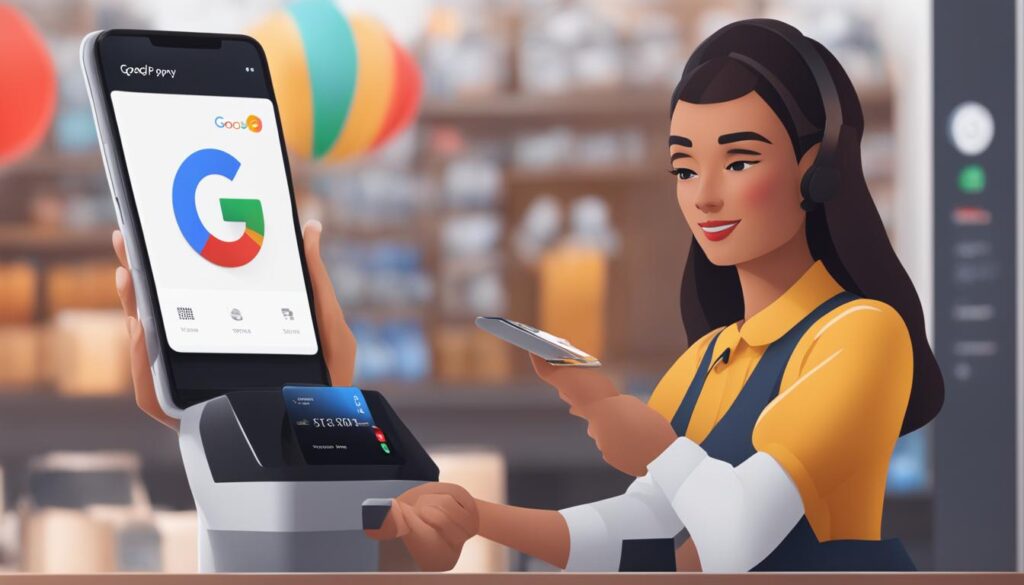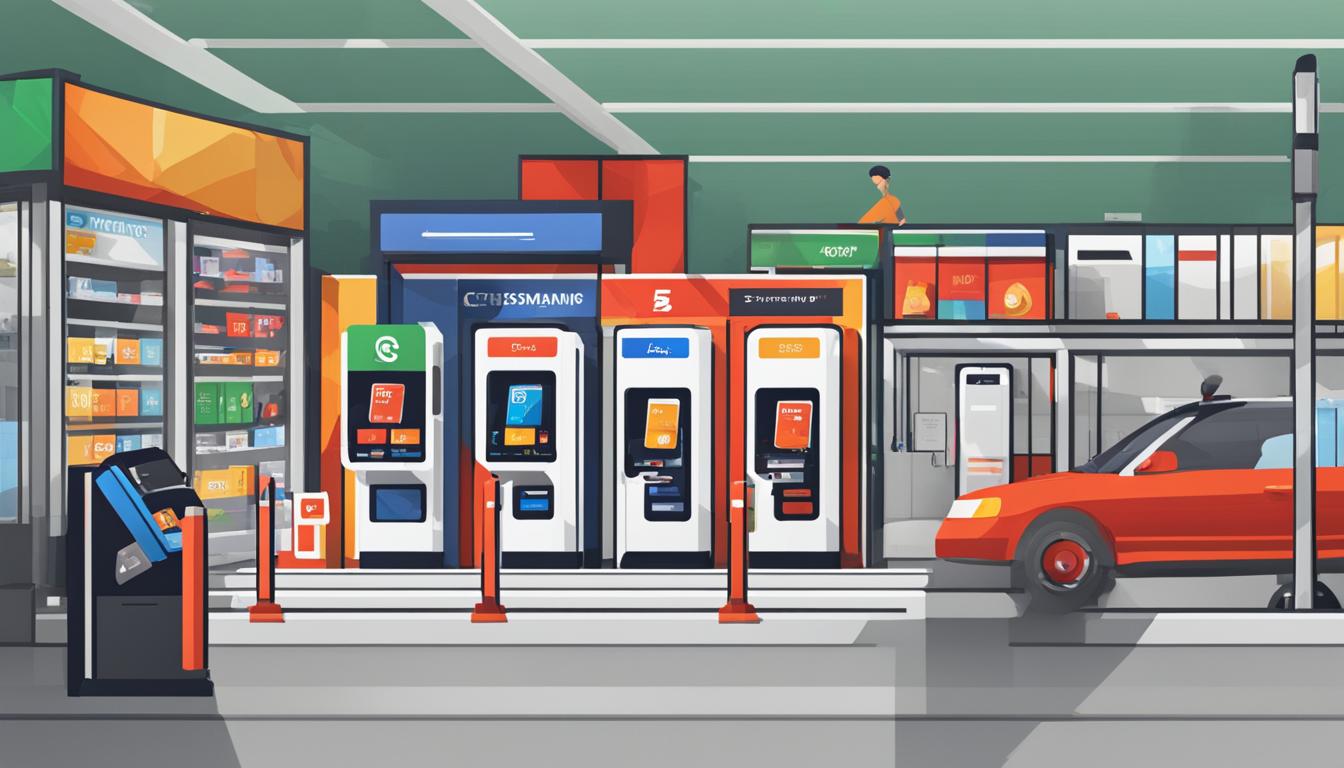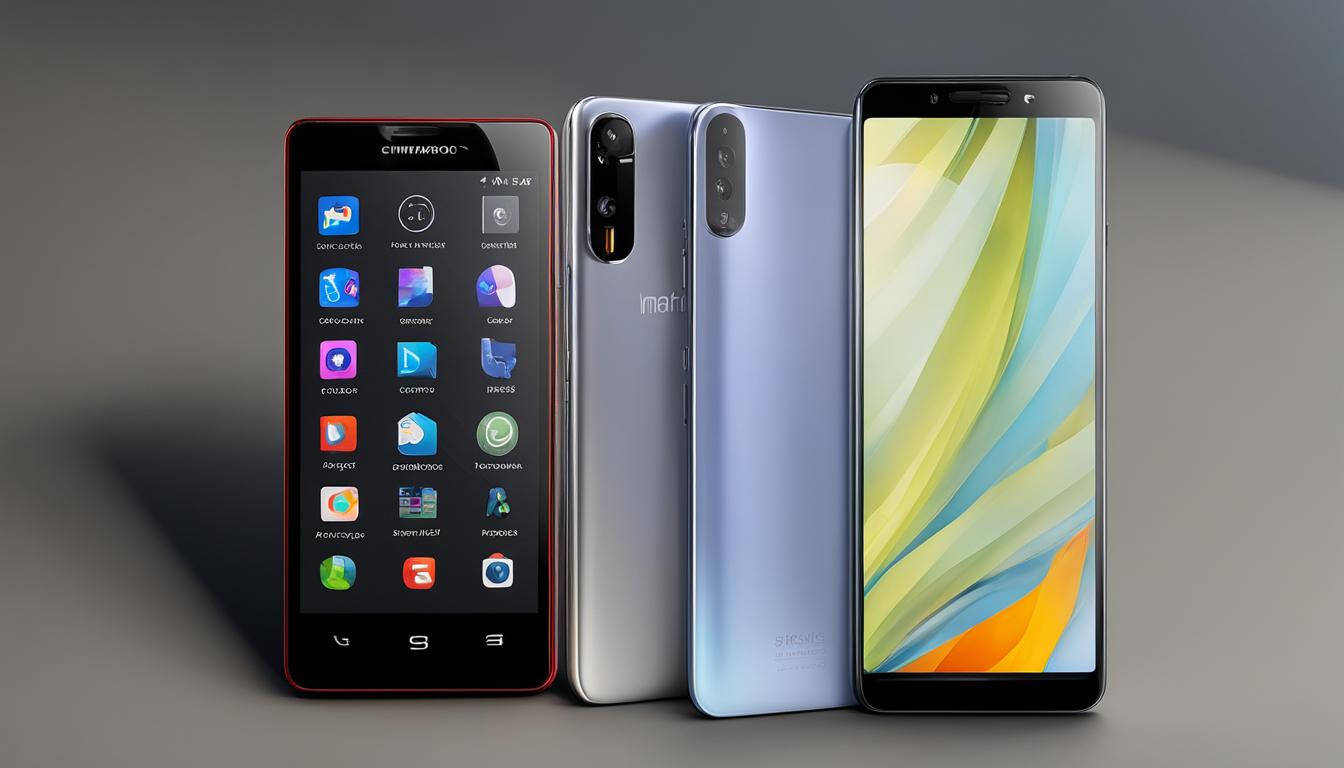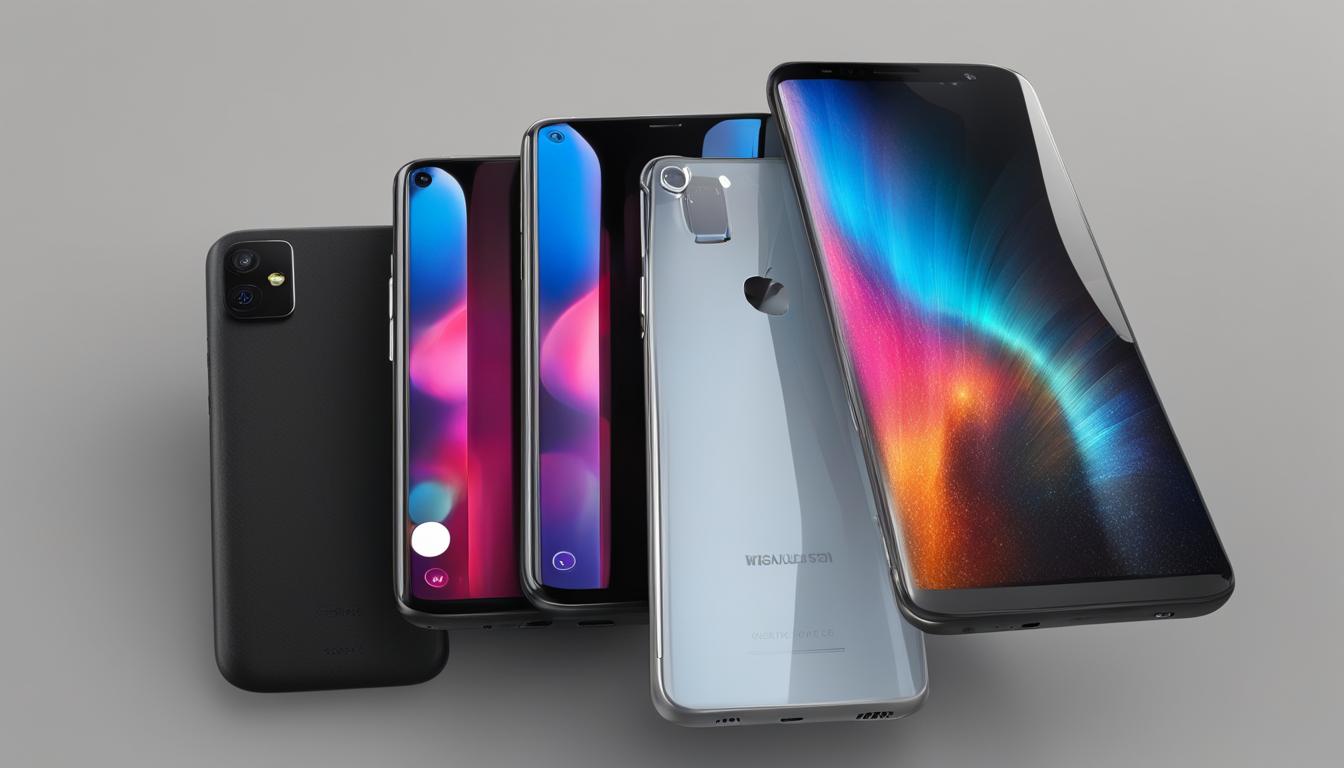Mobile payment systems have revolutionized the way consumers make transactions, offering convenience and ease of use. With mobile payment solutions like Apple Pay, Google Pay, and Samsung Pay, users can combine cash, credit cards, debit cards, and gift cards into one digital wallet on their smartphones. In this article, we will compare the strengths and weaknesses of these three popular mobile payment systems, exploring their features, user base, and adoption rates.
Key Takeaways:
- Apple Pay, Google Pay, and Samsung Pay are leading mobile payment systems.
- Each system offers unique features and benefits.
- Consider factors such as user base, merchant acceptance, and device compatibility when choosing a mobile payment system.
- Contactless payments and NFC technology are key components of secure mobile payments.
- Mobile wallets provide a convenient and secure alternative to traditional payment methods.
Apple Pay
Apple Pay is a widely used mobile payment app that allows users to make secure digital wallet transactions. With Apple Pay, users can easily make in-store purchases using their smartphones, eliminating the need for physical cash or credit cards. The app offers a seamless and convenient payment experience, making it a popular choice for many consumers.
One of the key strengths of Apple Pay is its rapid user growth. With 43.9 million users, Apple Pay has seen a 24% increase in its user base from 2020 to 2021. This growth can be attributed to the app’s widespread acceptance among merchants, with 85% of U.S. merchants now accepting Apple Pay as a form of payment.
However, despite its popularity and wide acceptance, Apple Pay accounts for less than 2% of in-store purchases made with digital wallets. This indicates that while many users have adopted Apple Pay, they still primarily rely on traditional payment methods for their purchases. Additionally, Apple Pay users tend to be younger, live in urban centers, and have higher incomes compared to users of other digital wallets.
Apple Pay’s User Growth
Apple Pay has experienced significant growth in its user base over the years, surpassing its competitors. The following table illustrates the number of Apple Pay users from 2017 to 2021:
| Year | Number of Apple Pay Users (in millions) |
|---|---|
| 2017 | 22.0 |
| 2018 | 27.2 |
| 2019 | 33.8 |
| 2020 | 35.3 |
| 2021 | 43.9 |
Overall, Apple Pay continues to be a dominant player in the mobile payment space, with its user-friendly interface and widespread acceptance. However, the relatively low usage rate for in-store purchases suggests that there is still room for growth and adoption among consumers.
Google Pay
Google Pay is a popular mobile payment app and digital wallet that offers a convenient and secure way to make transactions. With 25 million users and projected growth of 40% from 2020 to 2025, Google Pay is gaining traction in the mobile payment space. One of its notable features is the ability to add loyalty cards and participate in rewards programs, making it appealing to Android phone users.
While Google Pay has seen steady growth, it still lags behind Apple Pay in terms of user adoption. It currently accounts for only 10.3% of digital wallet in-store purchases. This lower usage may be attributed to factors such as user preferences and merchant acceptance. However, Google Pay recently underwent a redesign, requiring users to download a new app and reinstall. This update may streamline the user experience and lead to increased adoption.
Projected Growth
Google Pay’s projected growth of 40% from 2020 to 2025 indicates a positive trajectory for the platform. As more merchants and users embrace mobile payment solutions, Google Pay has the potential to become a more widely accepted option. Its integration with various rewards programs and loyalty cards further enhances its appeal for users seeking additional incentives for using the app.
| Google Pay | Apple Pay | Samsung Pay |
|---|---|---|
| 25 million users | 43.9 million users | 16.3 million users |
| Projected growth of 40% | 24% increase in users | Stagnant user growth |
| 10.3% of digital wallet in-store purchases | Nearly half of all in-store digital wallet purchases | Unknown percentage of in-store purchases |
In conclusion, Google Pay offers a user-friendly mobile payment app with the added benefit of loyalty card integration and a rewards program. While it may have fewer users and a lower share of in-store purchases compared to Apple Pay, its projected growth indicates increasing popularity. As the mobile payment landscape continues to evolve, Google Pay has the potential to gain more traction among users and merchants alike.

Samsung Pay: A Mobile Payment Solution with Unique Features
Samsung Pay is a versatile and feature-rich mobile payment app that offers users a convenient and secure way to make transactions. With its digital wallet functionality, rewards program, and compatibility with non-NFC credit card readers, Samsung Pay stands out as a unique option in the mobile payment landscape.
Rewards Program for Added Incentives
One of the standout features of Samsung Pay is its rewards program. Users can earn points for every transaction they make, which can be redeemed for a variety of rewards including discounts, gift cards, and more. This incentivizes users to choose Samsung Pay as their preferred mobile payment app, providing an extra layer of value and engagement.
| Key Features of Samsung Pay | Benefits |
|---|---|
| Rewards Program | Earn points for transactions, redeemable for discounts and other rewards. |
| Compatibility with Non-NFC Credit Card Readers | Allows users to make payments at a wider range of merchants, even if they don’t have NFC-enabled terminals. |
| Digital Wallet Functionality | Consolidate all payment cards into one app for easy access and convenience. |
Compatibility with Non-NFC Credit Card Readers
Another advantage of Samsung Pay is its compatibility with non-NFC credit card readers. While other mobile payment systems rely on NFC technology, Samsung Pay employs Magnetic Secure Transmission (MST), allowing users to make payments at a wider range of merchants, even if they don’t have NFC-enabled terminals. This broadens the acceptance of Samsung Pay and ensures that users can use the app in more locations.
Digital Wallet Functionality for Added Convenience
Samsung Pay also offers digital wallet functionality, allowing users to consolidate all of their payment cards into one app. By adding credit cards, debit cards, loyalty cards, and even gift cards into the app, users can easily access their payment information and make transactions with just a few taps on their smartphone. This streamlines the payment process and eliminates the need to carry multiple physical cards, making Samsung Pay a convenient and efficient choice for mobile payments.
In summary, Samsung Pay is a mobile payment app that offers a range of unique features, including a rewards program, compatibility with non-NFC credit card readers, and digital wallet functionality. These features set Samsung Pay apart from its competitors and provide users with added convenience, flexibility, and incentives to use the app for their mobile payment needs.
Conclusion
In conclusion, when comparing mobile payment systems like Apple Pay, Google Pay, and Samsung Pay, it’s important to consider various factors in order to make an informed decision. These mobile payment solutions have revolutionized the way we make smartphone payments, offering convenience and security through digital wallets and contactless payments.
Apple Pay boasts a large user base and is widely accepted by merchants, making it a popular choice. However, its usage rate for in-store purchases is relatively low compared to its user base. On the other hand, Google Pay provides the added benefits of loyalty cards and rewards programs, but it is still catching up in terms of user growth and market share.
Meanwhile, Samsung Pay stands out with its unique feature of compatibility with non-NFC credit card readers, offering users greater flexibility. Additionally, Samsung Pay allows users to connect with Samsung Money, a bank account that earns interest. However, Samsung Pay has a smaller user base compared to Apple Pay and Google Pay, and it can only be used with Samsung devices.
Ultimately, the best mobile payment system for you will depend on factors such as your device compatibility, personal preferences, and the level of merchant acceptance in your area. Whether you choose Apple Pay, Google Pay, or Samsung Pay, these secure mobile payment solutions provide a convenient and contactless way to make transactions using your smartphone.
FAQ
How do mobile payment systems like Apple Pay, Google Pay, and Samsung Pay work?
Mobile payment systems like Apple Pay, Google Pay, and Samsung Pay work by allowing users to add their credit cards, debit cards, and gift cards to a digital wallet on their smartphone. When making a purchase, users simply hold their phone near a compatible payment terminal and authorize the transaction using their fingerprint, face recognition, or a passcode.
Are mobile payments secure?
Yes, mobile payment systems use advanced encryption technology to protect your payment information. Additionally, most mobile payment systems do not store your actual card details on your device, further enhancing security. It’s important to keep your device and payment credentials secure to prevent unauthorized access to your mobile payment accounts.
Can I use mobile payment systems for online purchases?
Yes, mobile payment systems can be used for online purchases. When shopping on a website or in-app, simply select the mobile payment option at checkout, authenticate the transaction with your mobile payment app, and complete the purchase.
Can I use Apple Pay, Google Pay, or Samsung Pay on any smartphone?
Apple Pay is exclusive to Apple devices such as iPhone, iPad, Apple Watch, and Mac. Google Pay and Samsung Pay are available on a wider range of Android devices. However, certain older Android devices may not be compatible with Google Pay or Samsung Pay.
Can I use mobile payment systems at any store?
Mobile payment systems like Apple Pay, Google Pay, and Samsung Pay are accepted at millions of stores worldwide. However, acceptance may vary depending on the store’s payment processor and technology infrastructure. It’s always a good idea to check with the store or look for the mobile payment logo at checkout to ensure compatibility.
What happens if my smartphone is lost or stolen?
If your smartphone with mobile payment systems enabled is lost or stolen, you should immediately contact your mobile service provider to suspend or disable your mobile payment accounts. Most mobile payment systems require authentication (such as a passcode or biometric) before each transaction, providing an added layer of security in case of device loss or theft.
 Skip to main content
Skip to main content


